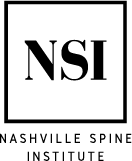Back Pain
Causes of Low Back Pain
Back Pain is the most common musculoskeletal complaint that contributes to impairment and disability affecting 93% of Americans at some point in their lifetime and affects over 10% of the population annually. In the workforce, lower back pain is only second to upper respiratory infections in regards to the number of days missed from work.
Keys to a Healthy Spine
- Maintain a healthy weight within normal BMI
- Proper posture; shoulders back and down
- Excellent body mechanics; bend at your knees, not your back
- Limit repetitive bending, lifting and twisting
- Strengthening your core; physical therapy, yoga, pilates, etc
Disc Disorders/Degenerative Disc Disease (DDD)
Over time all individuals will develop some extent of Degenerative Disc Disease (DDD) due to the loss of fluid in the discs as well as increased fibrous tissue and cartilage. There are many factors that can contribute to the development of DDD including posture, body mechanics, repetitive improper movement, laxity of the spine and genetics. DDD, unfortunately, causes the disc to become weak and allow the jelly-like nucleus pulposus (NP) to leak out. This weakening in the back of the disc allows disc bulges, herniations, extrusions, and sequestered discs. The leaky disc also allows the inside of the disc to “leak” inflammatory molecules to the nerves and joints in the back causing significant pain and discomfort. Until the development of the Discseel® Procedure, all treatments for pain stemming from the disc have been disappointing at best. Disc replacements, lumbar fusions and Discectomies (removal of the disc) unfortunately cause a significant amount of scar tissue and have had marginal success overall at best. The Discseel Procedure has allowed for a truly minimally invasive regeneration of the patient’s disc.
Facet Joints
Spinal Stenosis
Is a narrowing of the spinal canal where the spinal cord runs from the base of the brain to the sacrum. Foraminal stenosis is where there is decreased space and tightening where the spinal nerves leave the spine and can cause symptoms better known as sciatica. Congenital stenosis (being born with this) is rare and most of the time is from the degeneration process as we age and the spine adapts to injury and the constant pressure of gravity. Most of the time spinal stenosis begins initially after there has been disruption of the disc leading to DDD. This progression causes increased bone growth (bone spurs), arthritis of the facet joints and thickening of the ligaments all of which decrease the amount of space the spinal cord and nerves have. Maintaining greater disc height with the Discseel Procedure can alleviate some of the patients’ pain and prevent further degeneration of the spine contributing to spinal stenosis.
Muscle Pain
Muscle Strain/Sprain is typically caused by overusing the spine, repetitive movements, motor vehicle accidents, and trauma. Muscle spasms are usually the bodies “self protect mechanism” after sensing injury or inflammation to prevent further injury to the spine. Myofascial pain syndrome (trigger points) are usually secondary to poor posture, overuse, trauma or stress. Chronic muscle injuries and chronic pain that have not responded well to conservative treatments such as NSAIDS, Physical Therapy, ice and or heat and others have been shown to respond well to regenerative treatments such as Stem Cells and PRP.



